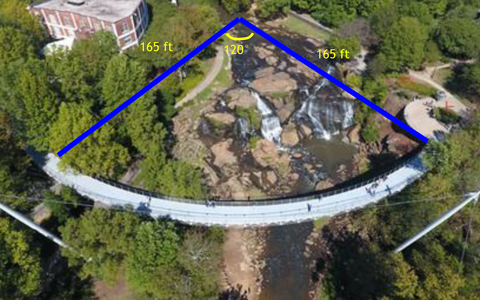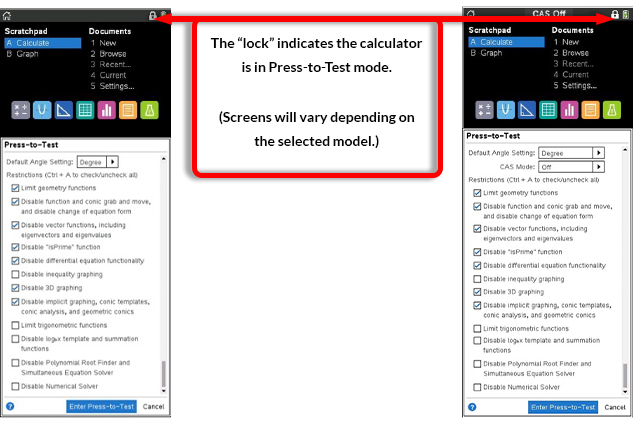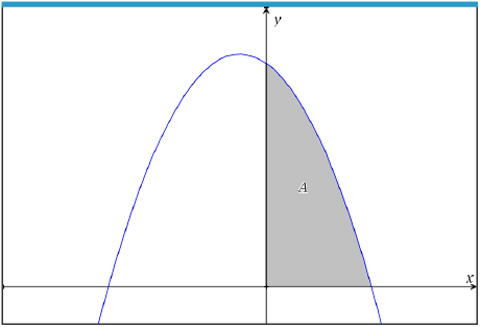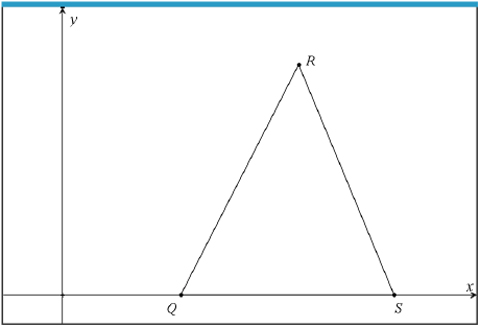The 7-Year Itch: Can It Be True for IB® Exams Too?
For almost 20 years now, I have been an IB® teacher, moderator and examiner at three different schools along the east coast, and for seven years I have been an instructor for TI. A professional goal of mine was to somehow marry these two aspects of my life for the benefit of my students and fellow teachers. When I was approached by TI in the summer of 2019 to assist in the development of an IB® resource website to do just that, I had no idea where that initial conversation would take me.
To give you a little context to this situation, every seven years, the International Baccalaureate® Organization audits each subjects’ curriculum. Yes! Even IB® exams are not exempt from a seven-year itch! In doing so, they make changes (additions/subtractions/adjustments) based on the changing times, teacher feedback and assessment results. Back in 2019, all IB® math courses were heading toward a major change. Names were changing, courses were being added and eliminated, new topics were being added, and unfortunately, some were being removed. With lots of changes happening, the teachers were going to need resources to help them get through the transition and beyond. What a perfect time for TI to show IB® teachers some “love” and pull all the resources together into one convenient place. And thus, the TI IB® resource page was born! That’s when my work really got started to help drive the development of this new site, created for IB® teachers specifically.
This has been a multiyear endeavor that started with a group effort of IB® teachers, who were also TI instructors, like me, from around the world. We were tasked with examining current TI activities on the website and selected around 50 activities that could be used in an IB® classroom and that could relate to the new changes in the IB® curriculum that were about to take place. To make these activities even more usable to IB® teachers, we recognized they would also need IB® exam style questions to go hand in hand with each activity. But as IB® teachers ourselves, we knew the need would be more than just activities, and that teachers would also need training resources to implement the changes that would soon be upon them. The new website would become a place where teachers could find IB® aligned activities and also sign up for upcoming monthly webinars. Past webinars that discuss the changes happening in IB® and how TI technology could be used to enhance their lessons could also be accessed.
Today, this resource continues to grow and offers a growing number of IB® aligned activities for both TI-Nspire™ and TI-84 graphing family users. Each recommended activity also contains an IB® exam style question document that allow the students to practice and prepare for the exam.
Let’s talk about training for a minute …
Over the past two years, there have been over 15 webinars covering all things new in the world of IB® mathematics! In addition to discussing the many changes to the IB® math curriculum, we have shared with the participants thoughts on the first round of exams in May 2021, including how to write the Mathematics Exploration IA, and the tips and tricks students can use with their TI-84 Plus CE or TI-Nspire™ CX II graphing calculators. You can listen to all past webinars through the on-demand webinars.
Our last IB® webinar of this school year was dedicated to IB® teachers preparing their students for the May 2022 exams. First, we took a guided tour of the IB® website, and looked at what test prep was available to teachers, and students, on the site. There are more than 50 IB® exam style questions, including mark schemes, both in PDF and “.doc” formats. The “.doc” format allows the teacher to alter the questions to fit their needs, giving them an endless number of sample problems to use.
We also looked at some of the newer IB® activities, which have a further extension written directly into the activity. These extensions also act as more exam style questions for teachers to use.
Example: Further IB® extension (arcs and angles)
A surveyor standing on the bank of the Reedy River measures the equal distance to the far left end and the far right end of the Liberty Bridge in Greenville, South Carolina, at a central angle of 120°. She found this distance to be 160 ft. See the diagram below (not to scale).

A sector is formed with these two equal distances and the bridge.
Calculator policies for the IB® exam
When discussing the technology component of taking an IB® exam, we also need to review the calculator polices. Each calculator is only allowed to do so much for a student, therefore some of the functions on the handhelds are restricted and must be turned off. TI calculators can be put in Press-to-Test mode that will do this without much effort. Learn more about that here.
Here are the TI calculators that are specifically allowed on the IB® exam:
- TI-84 Plus graphing calculator (all models)
- TI-83 Plus graphing calculator
- TI-Nspire™ (non-CAS) models
- TI-Nspire™ CX II and TI-Nspire™ CX II-T graphing calculators (OS version 5.0 or higher)
- TI-Nspire™ CX graphing calculator (OS version 4.5.1)
- TI-Nspire™ (selected CAS) models with CAS mode disabled
- TI-Nspire™ CX II CAS graphing calculator (OS version 5.0 or higher)
- TI-Nspire™ CX II-T CAS graphing calculator (OS version 5.0 or higher)
- TI-Nspire™ CX II-C CAS graphing calculator (OS version 5.0 or higher)
Note: All TI-Nspire™ models must be updated to the latest operating system (OS) as indicated. All TI-Nspire™ models must be placed in Press-to-Test mode with the correct features blocked (see list below).
Here are the TI calculators that are prohibited on the IB® exam:
- Voyage™ 200 calculator (all versions)
- TI-89 Titanium graphing calculator (all versions)
- Older CAS models
- TI-Nspire™ CX CAS graphing calculator
- TI-Nspire™ CAS graphing calculator
- TI-Nspire™ models that are not updated to the latest operating system
Calculators can be put into Press-to-Test modes

Note: For the latest OS on the TI-Nspire™ CX II graphing calculator, you can enter the IB® code: 0000-179.
During that final webinar, we also looked at commonly asked IB® questions and what the TI-84 Plus CE and the TI-Nspire™ CX II graphing calculators can do for the students on the exams. The level at which a calculator is necessary varies based on the topic of the question and the level of the exam. Students taking the Applications and Interpretations SL or HL exams, are allowed to use their calculators on each paper: 1, 2 or 3 (HL only). Students taking the Analysis and Approaches SL exam can only use their calculators on paper 2, and HL students can use them on papers 2 and 3. Most, but not necessarily all, of the calculator-allowed questions truly need the handheld to be successful.
Here are some sample questions where it is beneficial, if not a necessity:
Sample 1 (t -test) A gaming company is coming out with a new wireless controller. Its current wireless controller has been critiqued as not having an adequate playing time with a full charge. The company claims that the new controller will last much longer. They used 20 participants to test the two controllers. With a full charge, they had the participants play until the controllers’ charge died. The data, in hours, is below.

The company decides to use a t-test, at the 5% significance level, to determine if there is a change in the mean charge of the game controllers:
- To use the t-test, the company is making an assumption. State this assumption.
- State the null and alternative hypotheses for this t-test.
- Find the t-value and p-value for this test.
- State the conclusion of this test, in context, giving the reason.
You can see in this first sample that parts (a), (b) and (d) do not require the use of a calculator, but part (c) could not be answered in a timely manner without one. And students must remember that time is not to be wasted.
Sample 2 (integration and area under a curve)
The following diagram gives some of the graph g(x)=(4-2x)(3+x). The shaded region A is bounded by the x-axis, y-axis, and the graph of g.

The three points Q(2,0), R(4,8 ) and S(c,0) create the triangle below.

You can see in the second example, part (a), no calculator is needed, but to finish the parts (b) and (c), which together are worth three marks, you will want to use the calculator to speed along the process. Just in like sample 1, a student can answer these questions without a calculator, but when you have a time limit, spending three minutes on a problem is much better than spending 10–15 minutes on the same problem.
As I close out the webinar, and this blog, I will offer a few handheld tips and tricks to give students that last little push to get through their exams. Here are a few to give you a little taste. Join the webinar to get the full list.
Top three tips:
- It is frustrating to see students get incorrect answers because they forgot to check if the calculator was in radians or degrees. I always tell my students to leave their calculators in radians. If the question requires radians, they are good, but if the question requires degrees, they just type in the degree symbol after the given angle measure. It automatically overrides the radian mode. The extra 2–3 seconds to put in the degree symbol is well worth it.
- After the exam preparations have been made, and the calculators are ready to go before the start of the exam, students need to change how many digits appear for their answers. Make sure they select at least float so that their answers will show more than enough significant figures to satisfy IB®.
- Students should familiarize themselves with the menus and math template key on the TI-Nspire™ CX family graphing calculator, and the contents under the math (and 2nd math), stat (2nd stat) and vars (2nd vars) buttons on the TI-84 Plus family graphing calculator. They need to spend time the week leading up to the exam refreshing their memories where things are located for accuracy and speed during the exam.
Remember, the calculator can help, but it cannot (and should not!) do everything for the student. Preparation is the key. Good luck to your students!
About the author: Dan Wilkie is a full-time high school mathematics teacher at Christ Church Episcopal School in Greenville, South Carolina, where he lives with his wife and three children. He is a T³™ National Instructor, an IB® examiner and an IB® IA moderator. When he is not writing IB® activities and leading IB® webinars for TI, he spends his spare time acting in local theaters and playing golf.
TI products have been developed independently from and are not endorsed by the International Baccalaureate Organization. IB is a registered trademark owned by the International Baccalaureate Organization. Policies subject to change. Visit www.ibo.org.
